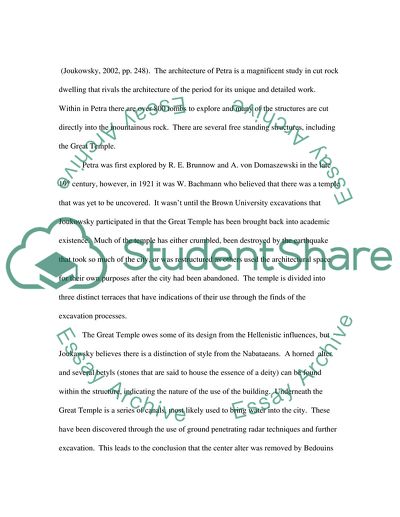Cite this document
(“The Petra Great Temple: A Nabataean Architectural Miracle Research Paper”, n.d.)
The Petra Great Temple: A Nabataean Architectural Miracle Research Paper. Retrieved from https://studentshare.org/religion-and-theology/1554079-the-bible-and-archeologytheology
The Petra Great Temple: A Nabataean Architectural Miracle Research Paper. Retrieved from https://studentshare.org/religion-and-theology/1554079-the-bible-and-archeologytheology
(The Petra Great Temple: A Nabataean Architectural Miracle Research Paper)
The Petra Great Temple: A Nabataean Architectural Miracle Research Paper. https://studentshare.org/religion-and-theology/1554079-the-bible-and-archeologytheology.
The Petra Great Temple: A Nabataean Architectural Miracle Research Paper. https://studentshare.org/religion-and-theology/1554079-the-bible-and-archeologytheology.
“The Petra Great Temple: A Nabataean Architectural Miracle Research Paper”, n.d. https://studentshare.org/religion-and-theology/1554079-the-bible-and-archeologytheology.


